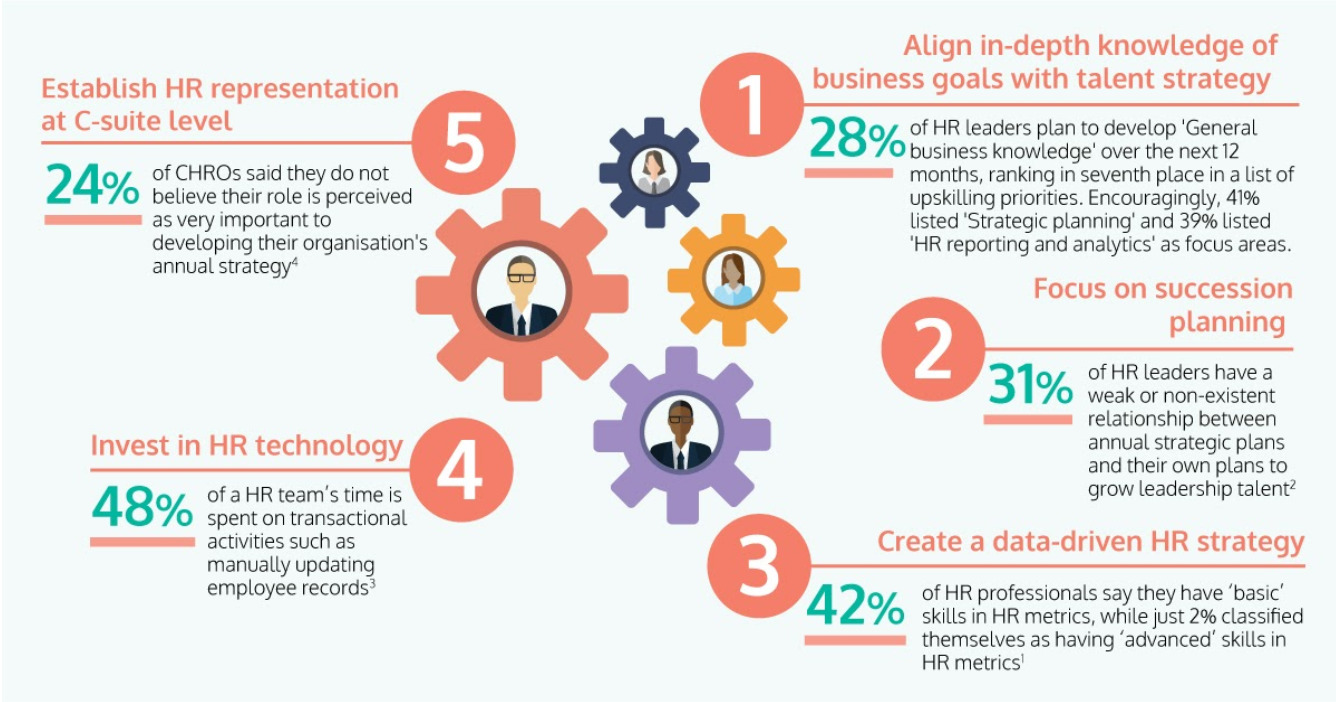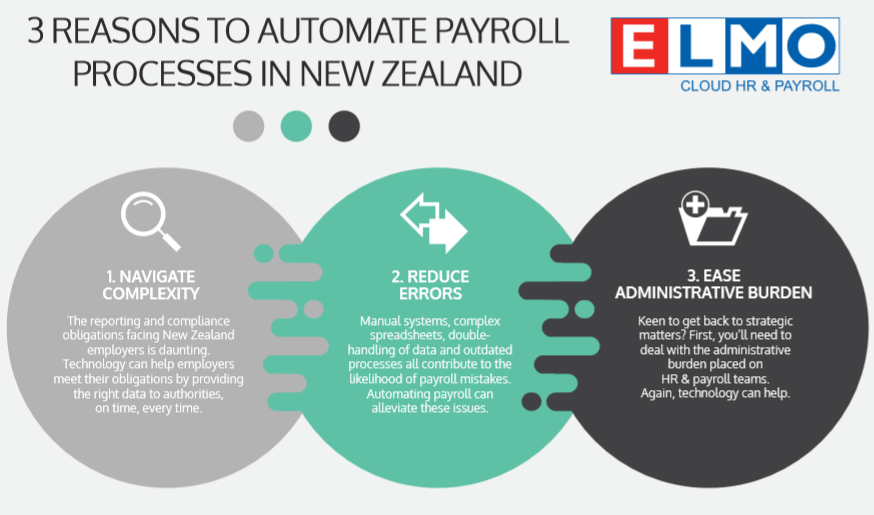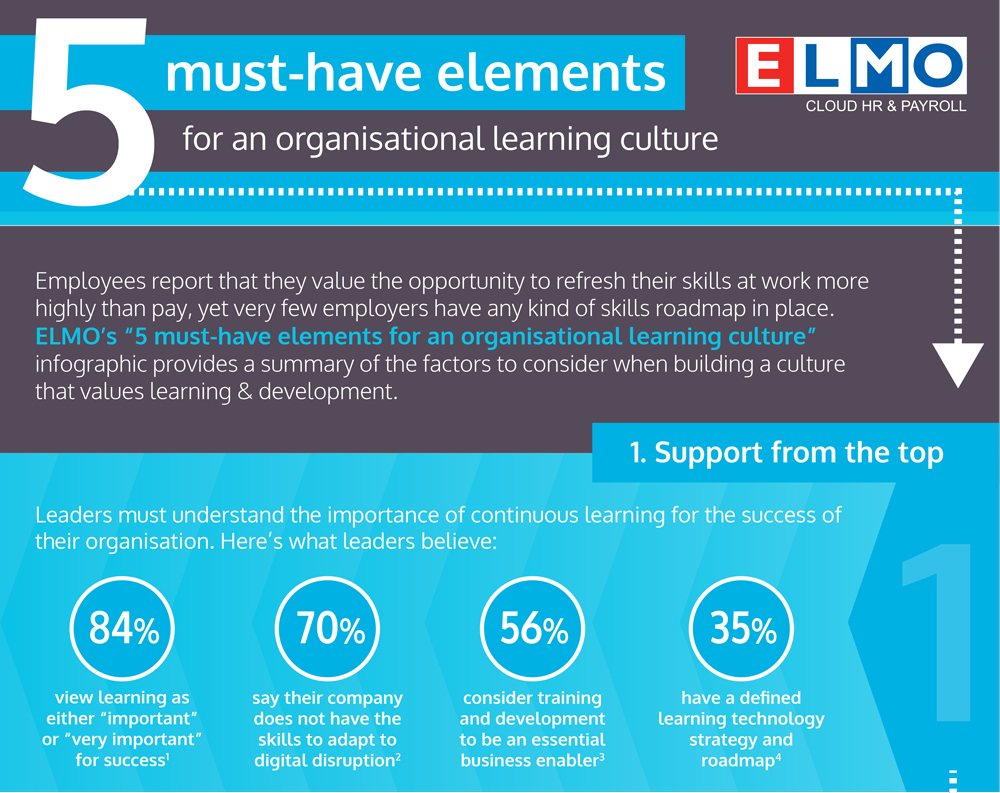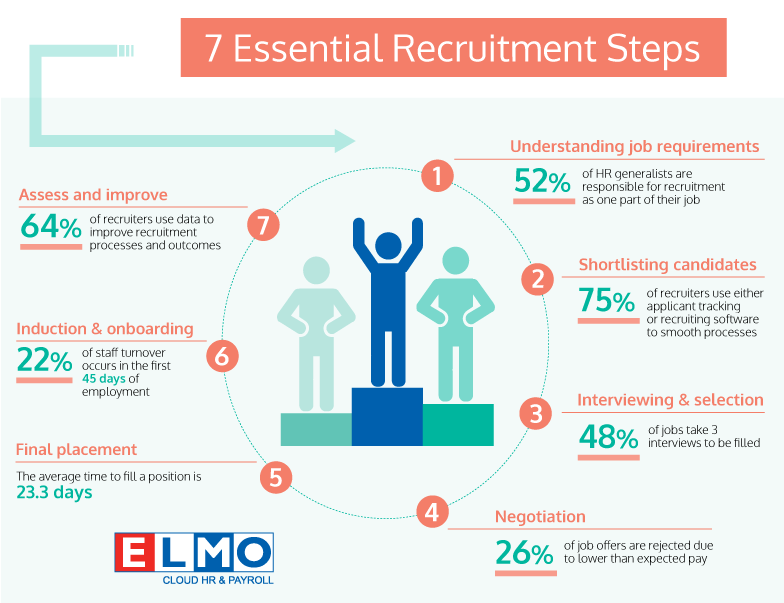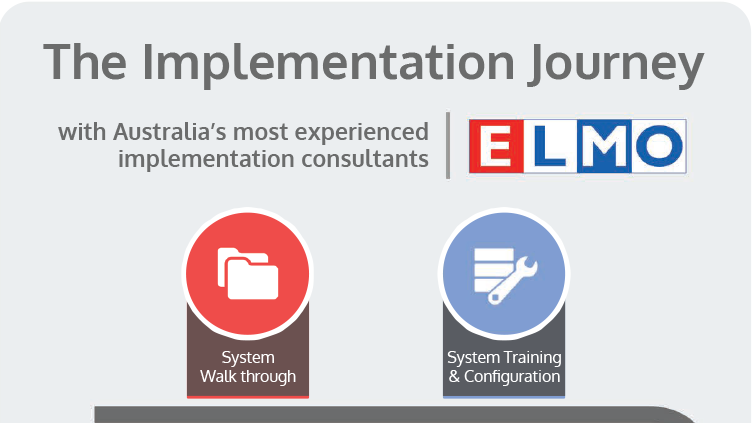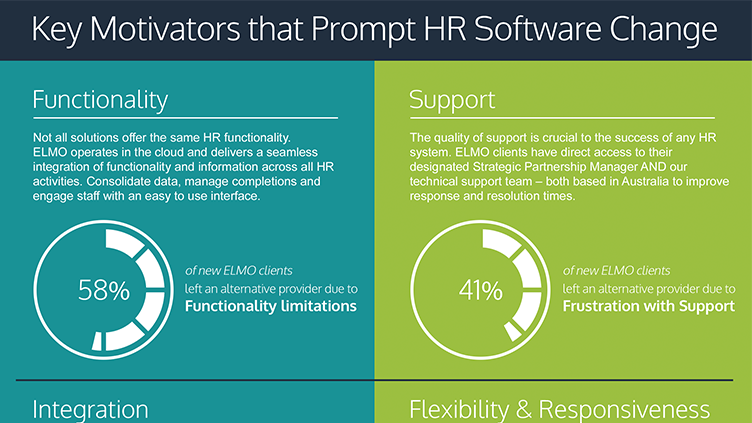3 Reasons to Automate Payroll Process
An organisation’s payroll function manages its largest expense, and thanks to technology it can now produce employee insights to help shape organisational strategy.
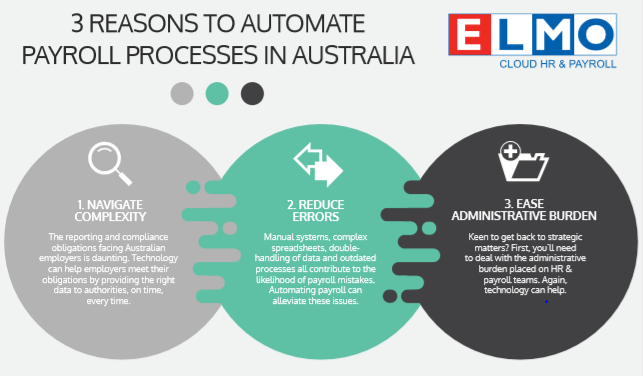
For those employers still using manual processes, ELMO’s infographic, “3 reasons to automate payroll processes”, outlines the primary benefits of automation, backed with key statistics.
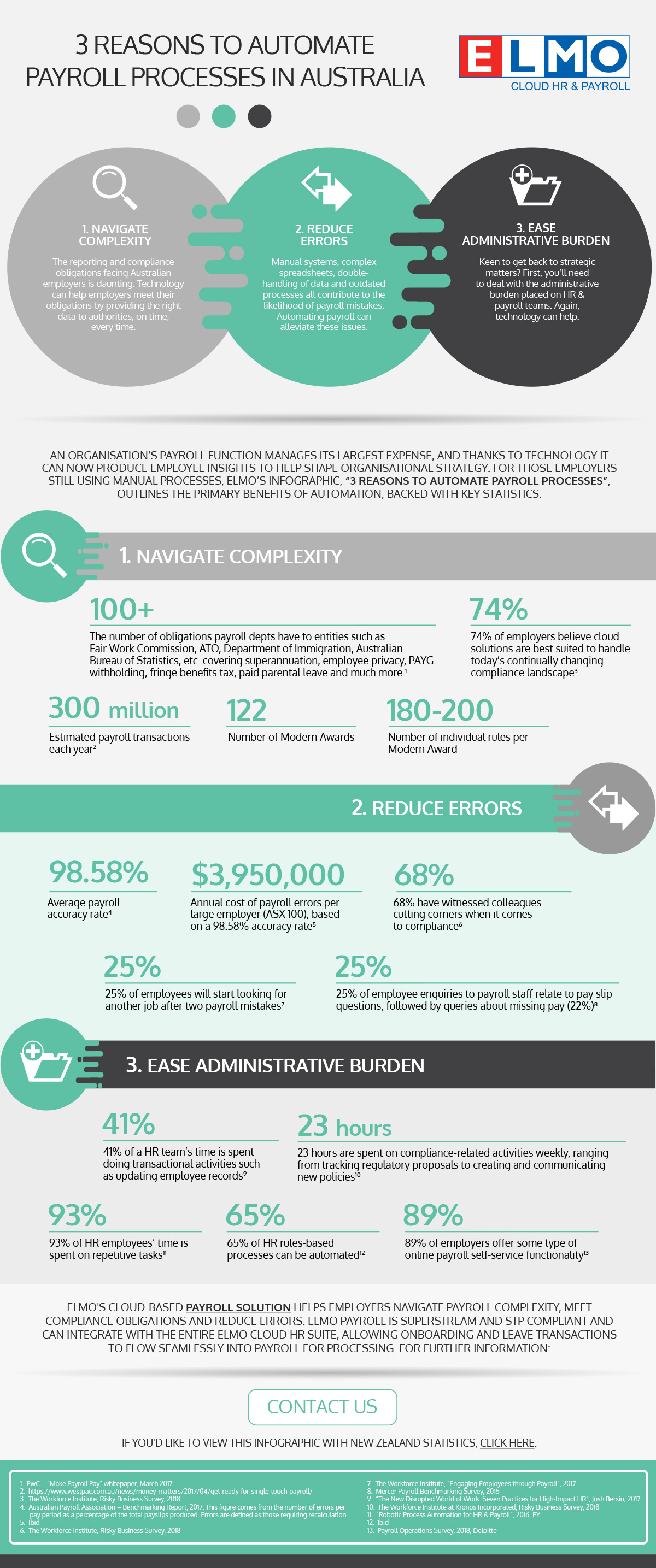
1. Navigate complexity
There are over 300 million payroll transactions annually in Australia, and employers have over 100 obligations to a wide range of authorities, including the Australian Taxation Office, Fair Work Commission, Department of Immigration and Australian Bureau of Statistics. These obligations range from PAYG withholding, superannuation, Single Touch Payroll, Fringe Benefits Tax and Parental Leave. To add to the complexity, there are 122 Modern Awards with an average Award having between 180-200 individual rules. These rules specify pay rates for overtime hours during the week and weekend, overtime for RDO, public holidays, late night shifts and employee classification, just to name a few. Technology can help, with 74% of employers believing cloud solutions are the most helpful in dealing with changing compliance.
2. Reduce errors
Manual processes mean increased payroll errors. While 100% accuracy is always the goal, the Australian Payroll Association reports the average payroll accuracy rate is 98.58%, costing large businesses $3,950,000 annually to fix. It also doesn’t help that 68% of survey respondents have witnessed colleagues cutting corners when it comes to compliance. The end result? Employee complaints – 25% of staff inquiries to payroll teams relate to payslip questions, followed by missing pay (22%) – and increased staff turnover. Some 25% of surveyed employees say they will start looking for a new job after just two payroll mistakes.
3. Ease the administrative burden
HR is said to spend a huge 41% of its time processing employee information and answering questions. An average of 23 hours per week are spent on compliance-related matters and 93% of HR employees’ time is spent on repetitive tasks. To ease this burden, employers are embracing payroll automation. 65% of HR rules-based processes can be automated and 89% of surveyed employers are offering are now offering some type of online payroll self-service functionality.
If you’d like to view this infographic with New Zealand statistics click here
ELMO Cloud HR & Payroll’s native cloud-based payroll solution helps employers navigate payroll complexity, meet compliance obligations and reduce errors. ELMO Payroll is SuperStream and STP compliant in Australia and can integrate with the entire ELMO Cloud HR suite, allowing onboarding and leave transactions to flow seamlessly into payroll for processing. For further information, contact us here.
 HR Core
HR Core 
